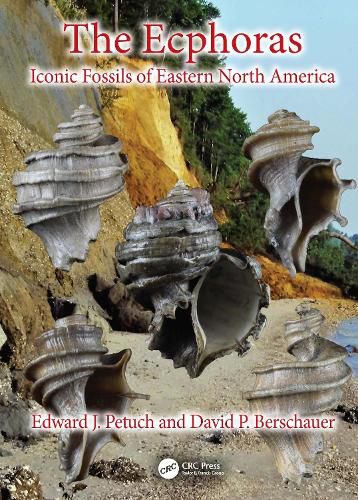Readings Newsletter
Become a Readings Member to make your shopping experience even easier.
Sign in or sign up for free!
You’re not far away from qualifying for FREE standard shipping within Australia
You’ve qualified for FREE standard shipping within Australia
The cart is loading…






In the Miocene and Pliocene fossil shell beds of the eastern United States, the single most spectacular molluscan species radiation is seen in the ecphora shells (the Tribe Ecphorini). These bizarrely shaped gastropods, with their distinctive ribbed shell sculpture, represent a separate branch of the Subfamily Ocenebridae, Family Muricidae. Characteristically, these muricid gastropods are heavily ornamented with spiral ribs and cords and are considered some of the most beautiful and interesting groups of fossil mollusks found along the Atlantic Coastal Plain and Floridian Peninsula. The ecphoras are greatly sought after by fossil collectors.
The ecphora faunas, and their individual species and subspecies, are illustrated and described in detail, along with photographs of ecphora-bearing geological units and in-situ specimens. The authors list the 67 known species and subspecies that are recognized as valid, arranged by the eight genera and five subgenera that encompass these taxa.
$9.00 standard shipping within Australia
FREE standard shipping within Australia for orders over $100.00
Express & International shipping calculated at checkout
In the Miocene and Pliocene fossil shell beds of the eastern United States, the single most spectacular molluscan species radiation is seen in the ecphora shells (the Tribe Ecphorini). These bizarrely shaped gastropods, with their distinctive ribbed shell sculpture, represent a separate branch of the Subfamily Ocenebridae, Family Muricidae. Characteristically, these muricid gastropods are heavily ornamented with spiral ribs and cords and are considered some of the most beautiful and interesting groups of fossil mollusks found along the Atlantic Coastal Plain and Floridian Peninsula. The ecphoras are greatly sought after by fossil collectors.
The ecphora faunas, and their individual species and subspecies, are illustrated and described in detail, along with photographs of ecphora-bearing geological units and in-situ specimens. The authors list the 67 known species and subspecies that are recognized as valid, arranged by the eight genera and five subgenera that encompass these taxa.